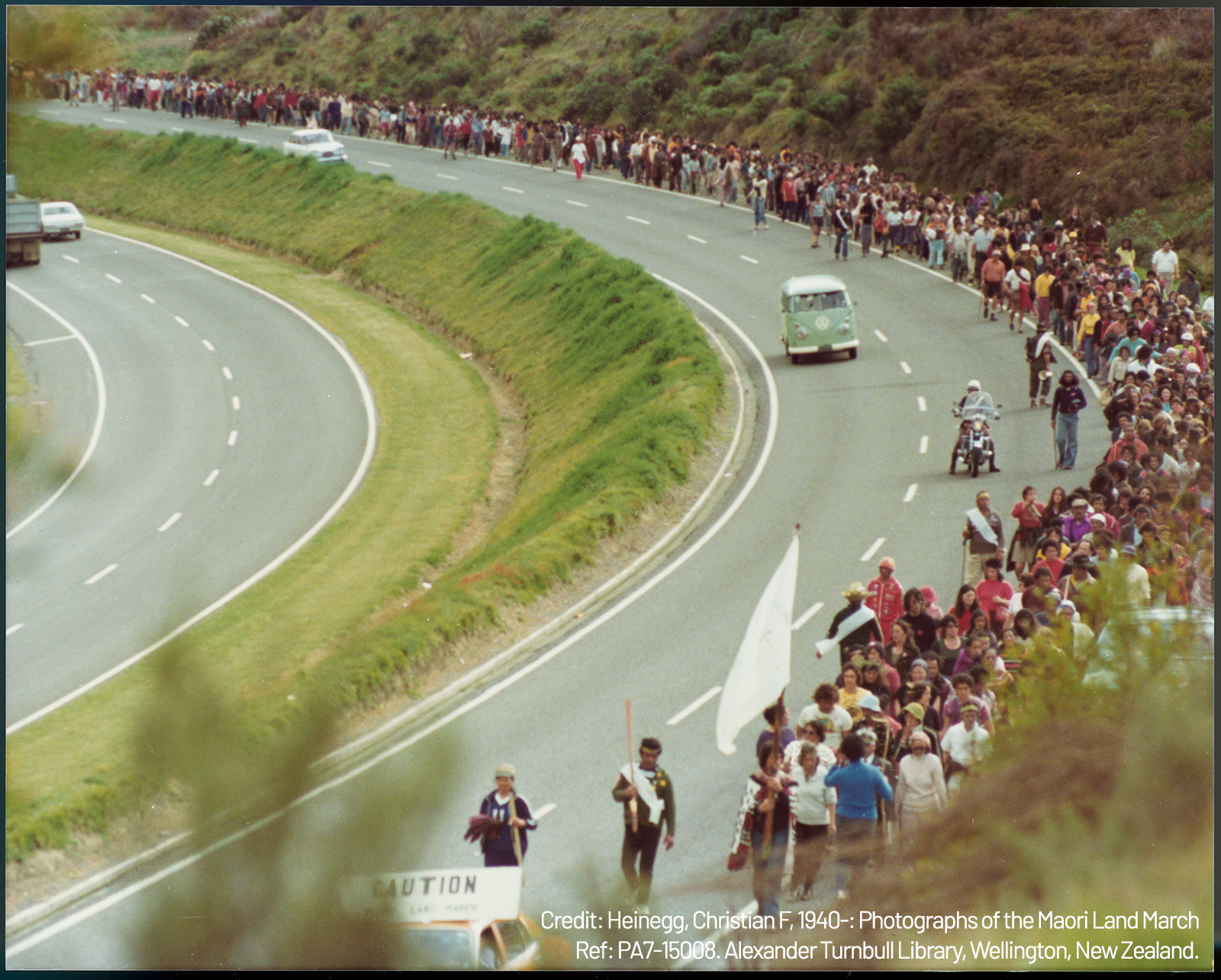Māori are tangata whenua — the first people of Aotearoa New Zealand. Since Europeans began settling here in the early 1800s, Māori found their role as kaitiaki or guardians of the land increasingly at risk, as well as the aroha of the whānau that gather on that land, and the mauri or life force that runs through it.
When Te Tiriti o Waitangi or the Treaty of Waitangi was signed in 1840, Māori believed that it protected their land rights. But by 1939, almost a hundred years after the Treaty was signed, very little land remained in their guardianship – just 1 percent of the South Island and 9 percent of the North Island.
As a well-respected kuia, Dame Whina Cooper spent her life dedicated to fighting for and protecting Māori land rights. Born in Hokianga in 1895, by 1930 she had become a leader among her people, setting up and supervising Māori land development schemes in the region.
Later on, she became president of the Māori Women's Welfare League in Auckland, which worked to improve conditions for Māori who had moved into the cities. By the mid-1950s the League had over 300 branches across the country and 4,000 members. In 1957, she earned the title Te Whaea o te Motu, or Mother of the Nation.
But it was the image of Dame Whina Cooper, this extraordinary woman of mana, that captured the attention of the nation when in 1975 at the age of 80, she led a hīkoi from Te Hāpua in the far north to Parliament in Wellington. There, accompanied by 5000 other marchers, she presented the Memorial of Rights to Prime Minister Bill Rowling calling for ‘not one more acre’ of Māori land to be taken, along with a petition signed by 60,000 people.

The hīkoi was a pivotal moment in the Māori land rights movement – and in the history of Aotearoa New Zealand. Later that month, Parliament passed the Treaty of Waitangi Act which established the Waitangi Tribunal to right the wrongs that had been done.
Those wrongs were not resolved overnight – and some are still being addressed today – but looking back, those who marched, spoke out, and rallied the people in power, have changed history for the better.
At the opening of the Auckland Commonwealth Games in 1990, Dame Whina Cooper reminded the crowd that ‘the Treaty was signed so that we could all live as one nation in Aotearoa.’
Today, climate change is an increasingly worrying reality that affects all of Aotearoa – individuals, whānau, communities, iwi, and businesses. We can weave together tikanga and mātauranga Māori along with science and data to build a strong response to climate change, and a legacy that we can be proud of. Now is our time to act.
Will we be on the right side of history on climate change?
Cover image of Dame Whina Cooper: NZ Herald/Tubberty
